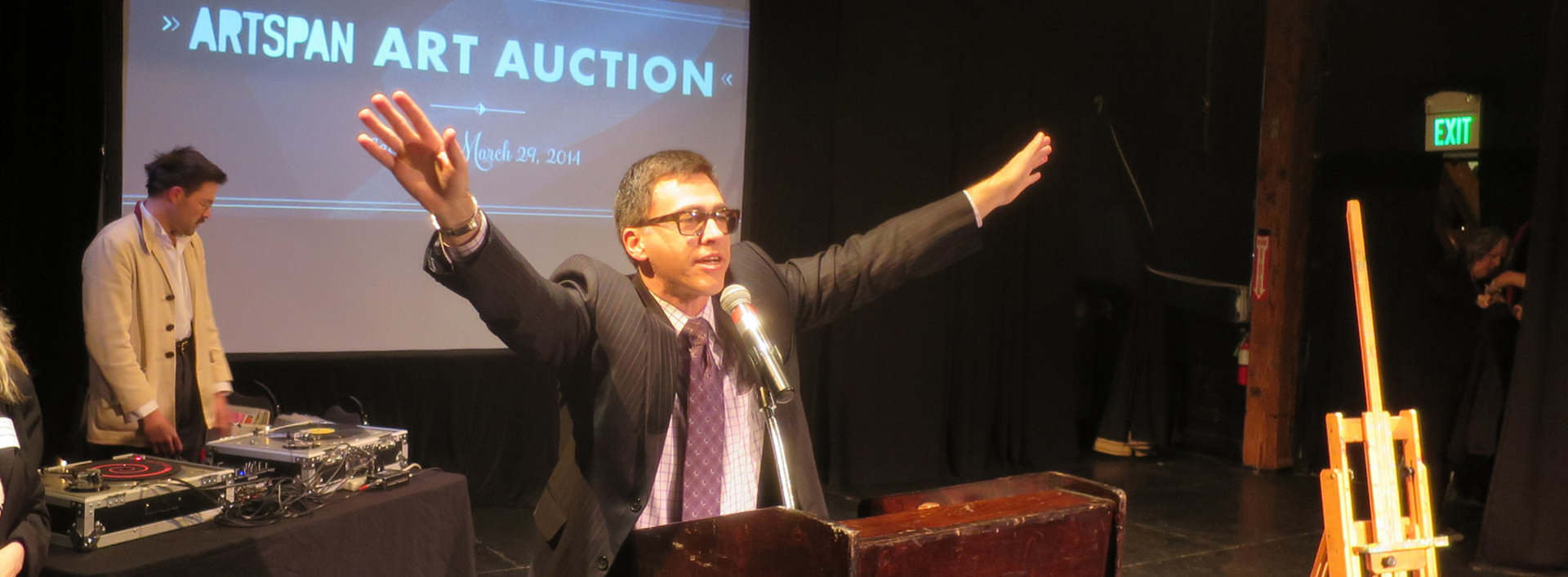ArtSpan evolved from the SF Open Studios program that began in 1975 by a small group of enterprising artists who wanted to make their artwork accessible to the public. These artists decided to open their studios concurrently on one weekend to encourage collectors to visit artists' workspaces and see where art is made. Throughout the first 14 years, the event operated as a private enterprise and depended almost entirely on artist registration fees and volunteers. The event became so popular that it grew to encompass two weekends, then three, finally settling on the four-weekend model we still employ today. ArtSpan was created as a 501(c)(3) Non-Profit Corporation in 1991 to secure the longevity and consistency of the SF Open Studios program while creating additional programming for the community, youth, and families. 2017 marks the 42nd Anniversary of SF Open Studios.
From the start, SF Open Studios grew in terms of artist and public participation; however, the growth of the program without a formal organization and other forms of income made it inevitable that it would succumb to the pressures caused by its own success. This fact was made abundantly clear after the 1989 earthquake forced the closing of the SF Open Studios Exhibition and threw an already strained program into crisis. Following the abbreviated 1989 Exhibition, a group of participating artists and friends formed an ad-hoc committee; they charged themselves to develop a strong organization capable of providing the necessary financial and human resources to ensure that SF Open Studios would continue as a San Francisco tradition.
An eight-member Board of Directors and an Executive Director were appointed in February 1990. Each Board member contributed financially with a total contribution of approximately 5% of the total expenses. California Lawyers for the Arts agreed to serve as fiscal agent, enabling the new organization to seek funding until it obtained its own non-profit, tax-exempt status. A program evaluation began immediately with a survey of the 1989 participating artists and a planning process was initiated with an open forum.
The 1990 SF Open Studios marked the 15th Anniversary of the event and the first year under the new organization. The event was an unmitigated success with 440 participating artists, a 13% increase of 1989, and an estimated 20,000 visitors. The growth and success of the SF Open Studios event has continued with the number of participating artists now exceeding 800. Juried and curated exhibitions, featuring the work of selected artists from the prior year's SF Open Studios was added in 1991 to provide additional opportunities for the participating artists to gain exposure.
In 1991, ArtSpan received its non-profit, tax-exempt status from both the State and Federal governments. The Board grew to 16 members, consisting of artists, arts professionals, and business professionals in management, finance, and law. The Board is designed with an Executive Committee made up of four officers.
In 1994, the Art for City Youth program was developed to involve youth who live in the South of Market area with the visual arts. The first project was the creation of a mural for a neighborhood agency. As of 1995, four additional murals were commissioned. The program has been expanded to include youth from other neighborhoods as well as additional activities centered on SF Open Studios, such as student tours of the SF Open Studios Exhibition, artist residencies, Family Art Day at Hunters Point Shipyard, Kaleidoscope events, and Youth Open Studios.
ArtSpan continues to serve a communication and resource network for artists and patrons, through Art Curious events, Make Your Art Your Business workshops, networking mixers for artists, and SF Open Studios Hubs.

